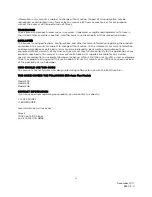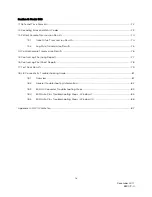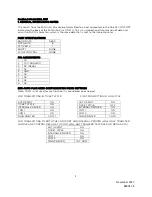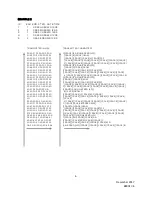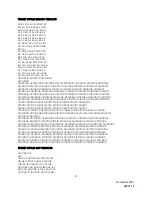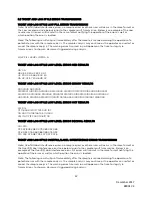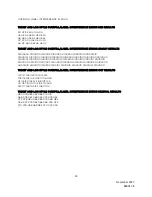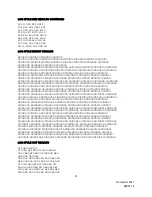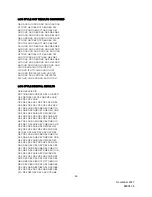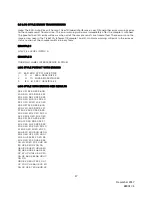
3
December
2017
880017
‐
4
3. DECODING ERROR AND STATUS CODES
To decode an alarm error code or status code, identify the largest value equal to or smaller than code
reported. Subtract that value from the error code reported. Continue the same process until you reach
0. Each binary value subtracted from the original number is an error message that applies to the sample.
EXAMPLES:
Note: Refer to table on page 4 for binary values and assignments. Status codes are figured in the same
manner as error codes. If a code matches the code from the table then the error is the matching binary
value.
Example 1
Reported error code = 1048
The largest binary value less than or equal to 1048 is 1024 (Sample Overfilled Error). Therefore, 1024 is
subtracted from 1048 to get 24.
1048-1024=24
Since 0 has not been reached, the next closest binary number to 24, without exceeding 24, must be
subtracted. Therefore, 16 (No ID Code Error) is subtracted from 24 to get 8.
24-16=8
Since 0 has not been reached, the next closest binary number to 8, without exceeding 8, must be
subtracted. Therefore, 8 (Out of Range Error) is subtracted from 8 to get 0.
8-8=0
Since 3 error codes were subtracted from the original reported value, all 3 error codes, (Sample Overfill,
No ID code Error and Out of Range Error) are associated with the sample.
Example 2
Reported error code = 264
The largest binary value less than or equal to 264 is 256 (Timing Error). Therefore, 256 is subtracted
from 264 to get 8.
264-256=8
Since 0 has not been reached, the next closest binary number to 8 without exceeding 8, must be
subtracted. Therefore, 8 (Out of Range Error) is subtracted from 8 to get 0.
8-8=0
Since 2 error codes were subtracted from the original reported value, both error codes (Timing Error
and Out of Range Error) would be associated with the sample error.



